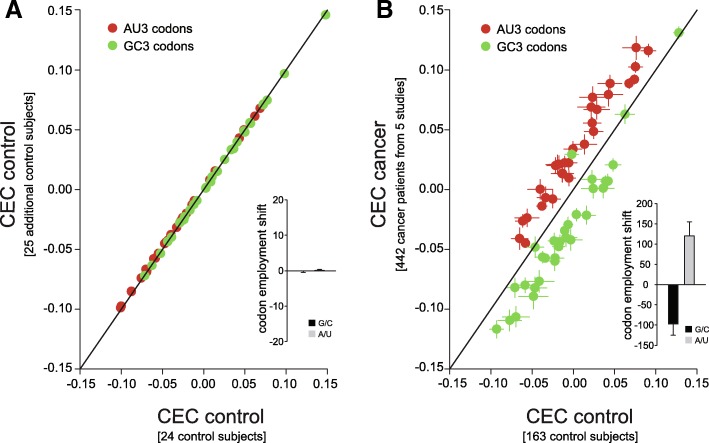Fig. 5.
Confirming the existence of the codon employment shift from the available mRNA abundances, and by modeling. a. Schematic representation of the two scenarios. On the left, 1st scenario: the shift in codon employment is causal in nature, and drives changes in the gene expression. mRNAs richer in AU3 codons (lighter red color) get more expressed, irrespective of which gene group they belong to. In other words, the shift drives the expression of all transcripts in proportion to their AU3 codon %. On the right, 2nd scenario the shift in codon employment is an effect of the differential expression of GP1 genes. In this scenario GP1 genes are favored, independent of their respective AU3 codon %. b. Measured and modeled codon employment shift, analyzed over all genes. When measured across all mRNAs, the codon employment shifts towards the AU3 codons. A model following the second scenario also reproduces the codon employment shift measured in cancer. c. We measured (left) or modeled (right) the codon employment shift only in GP1 genes, taken in isolation. The “effect” model no longer reproduces the data. d. As in c but for all the other genes (not part of GP1). The 2nd scenario is again unable to reproduce the results, which implies that the codon employment shift is probably causal in nature. The codon employment shift is expressed as average CEC change, in % of the initial CEC values

